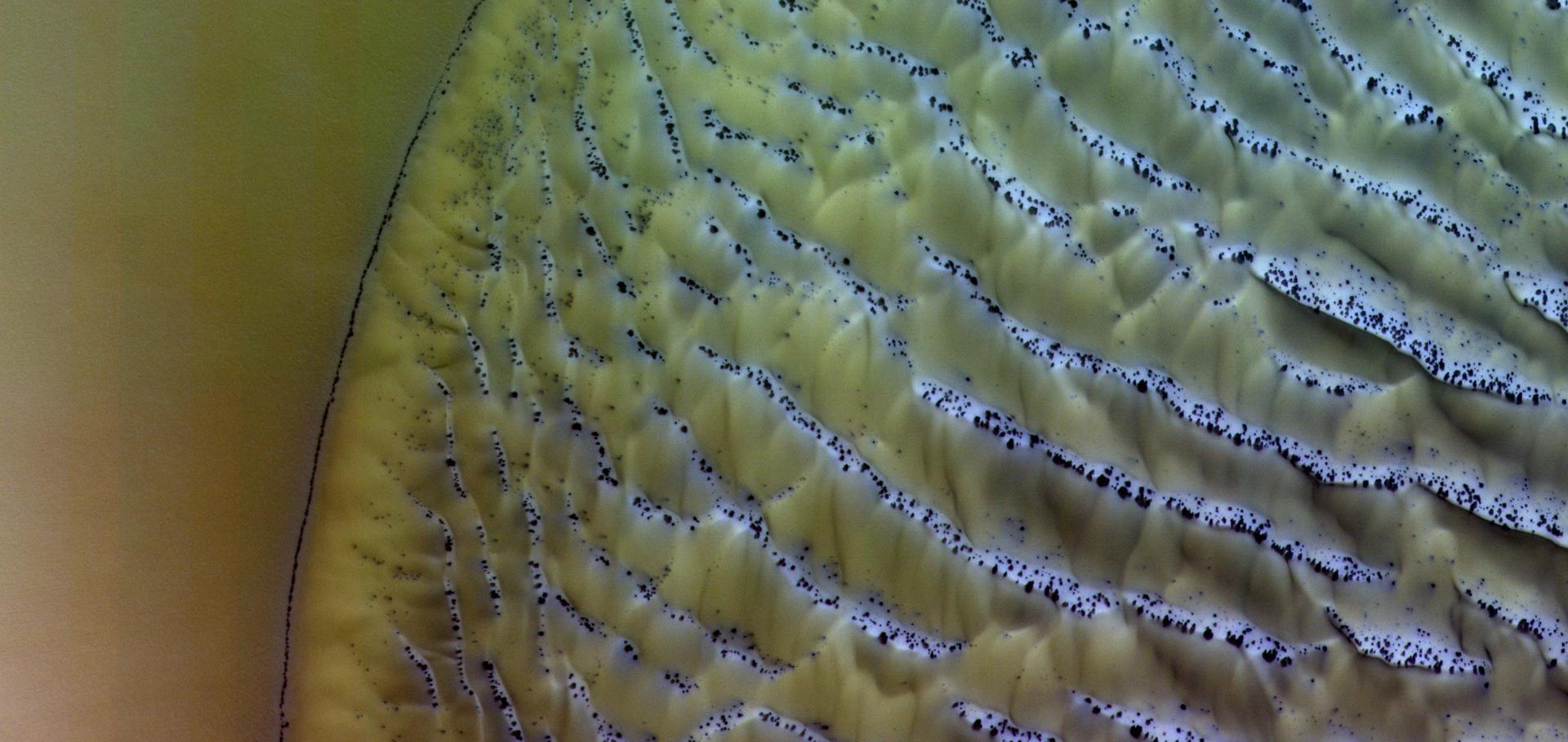Isotopic fractionation of water and its photolytic products in the atmosphere of Mars
Nature Astronomy Springer Nature 5:9 (2021) 943-950
Abstract:
The current Martian atmosphere is about five times more enriched in deuterium than Earth’s, providing direct testimony that Mars hosted vastly more water in its early youth than nowadays. Estimates of the total amount of water lost to space from the current mean D/H value depend on a rigorous appraisal of the relative escape between deuterated and non-deuterated water. Isotopic fractionation of D/H between the lower and the upper atmospheres of Mars has been assumed to be controlled by water condensation and photolysis, although their respective roles in influencing the proportions of atomic D and H populations have remained speculative. Here we report HDO and H2O profiles observed by the Atmospheric Chemistry Suite (ExoMars Trace Gas Orbiter) in orbit around Mars that, once combined with expected photolysis rates, reveal the prevalence of the perihelion season for the formation of atomic H and D at altitudes relevant for escape. In addition, while condensation-induced fractionation is the main driver of variations of D/H in water vapour, the differential photolysis of HDO and H2O is a more important factor in determining the isotopic composition of the dissociation products.Photolysis controls the isotopic composition of water products escaping Mars’ atmosphere
Nature Astronomy Springer Nature 5 (2021) 943-950
Abstract:
The current Martian atmosphere is about five times more enriched in deuterium than Earth’s, providing direct testimony that Mars hosted vastly more water in its early youth than nowadays. Estimates of the total amount of water lost to space from the current mean D/H value depend on a rigorous appraisal of the relative escape between deuterated and non-deuterated water. Isotopic fractionation of D/H between the lower and the upper atmospheres of Mars has been assumed to be controlled by water condensation and photolysis, although their respective roles in influencing the proportions of atomic D and H populations have remained speculative. Here we report HDO and H2O profiles observed by the Atmospheric Chemistry Suite (ExoMars Trace Gas Orbiter) in orbit around Mars that, once combined with expected photolysis rates, reveal the prevalence of the perihelion season for the formation of atomic H and D at altitudes relevant for escape. In addition, while condensation-induced fractionation is the main driver of variations of D/H in water vapour, the differential photolysis of HDO and H2O is a more important factor in determining the isotopic composition of the dissociation products.Annual appearance of hydrogen chloride on Mars and a striking similarity with the water vapor vertical distribution observed by TGO/NOMAD
Geophysical Research Letters Wiley 48:11 (2021) e2021GL092506
Abstract:
Hydrogen chloride (HCl) was recently discovered in the atmosphere of Mars by two spectrometers onboard the ExoMars Trace Gas Orbiter. The reported detection made in Martian Year 34 was transient, present several months after the global dust storm during the southern summer season. Here, we present the full data set of vertically resolved HCl detections obtained by the NOMAD instrument, which covers also Martian year 35. We show that the particular increase of HCl abundances in the southern summer season is annually repeated, and that the formation of HCl is independent from a global dust storm event. We also find that the vertical distribution of HCl is strikingly similar to that of water vapor, which suggests that the uptake by water ice clouds plays an important role. The observed rapid decrease of HCl abundances at the end of the southern summer would require a strong sink independent of photochemical loss.Revealing a high water abundance in the upper mesosphere of Mars with ACS onboard TGO
Geophysical Research Letters Wiley 48:10 (2021) e2021GL093411
Abstract:
We present the first water vapor profiles encompassing the upper mesosphere of Mars, 100–120 km, far exceeding the maximum altitudes where remote sensing has been able to observe water to date. Our results are based on solar occultation measurements by Atmospheric Chemistry Suite (ACS) onboard the ExoMars Trace Gas Orbiter (TGO). The observed wavelength range around 2.7 μm possesses strong CO2 and H2O absorption lines allowing sensitive temperature and density retrievals. We report a maximum H2O mixing ratio varying from 10 to 50 ppmv at 100–120 km during the global dust storm (GDS) of Martian Year (MY) 34 and around southern summer solstice of MY 34 and 35. During other seasons water remains persistently below ∼2 ppmv. We claim that contributions of the MY34 GDS and perihelion periods into the projected hydrogen escape from Mars are nearly equivalent.Upper limits for phosphine (PH3) in the atmosphere of Mars
Astronomy and Astrophysics EDP Sciences 649:May 2021 (2021) L1


